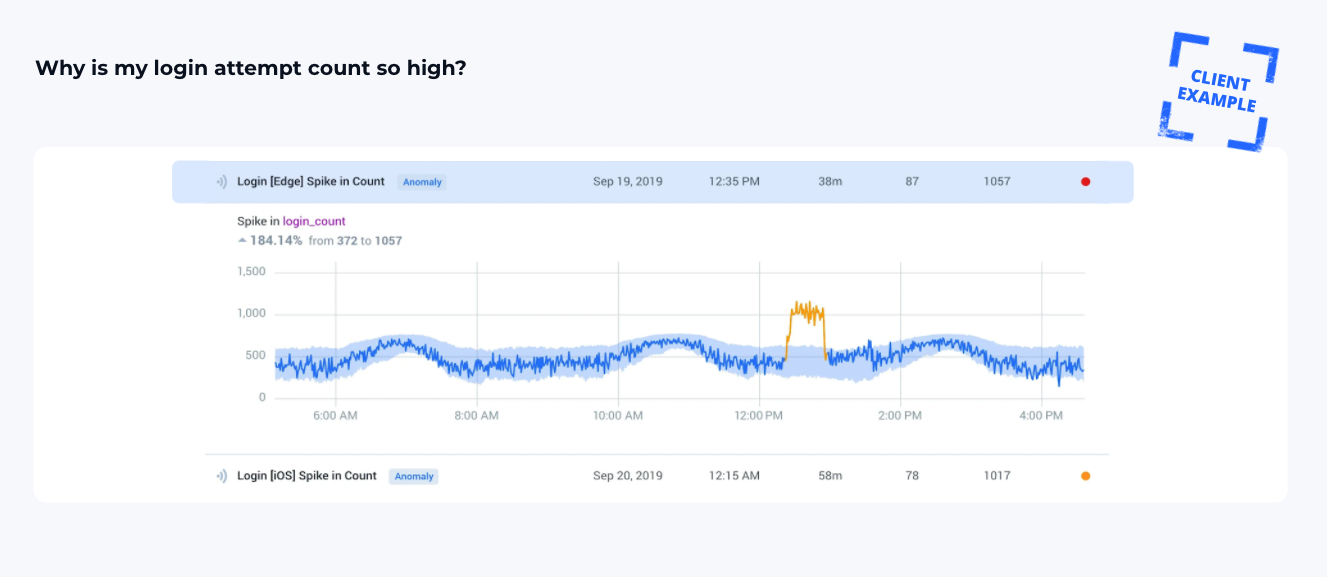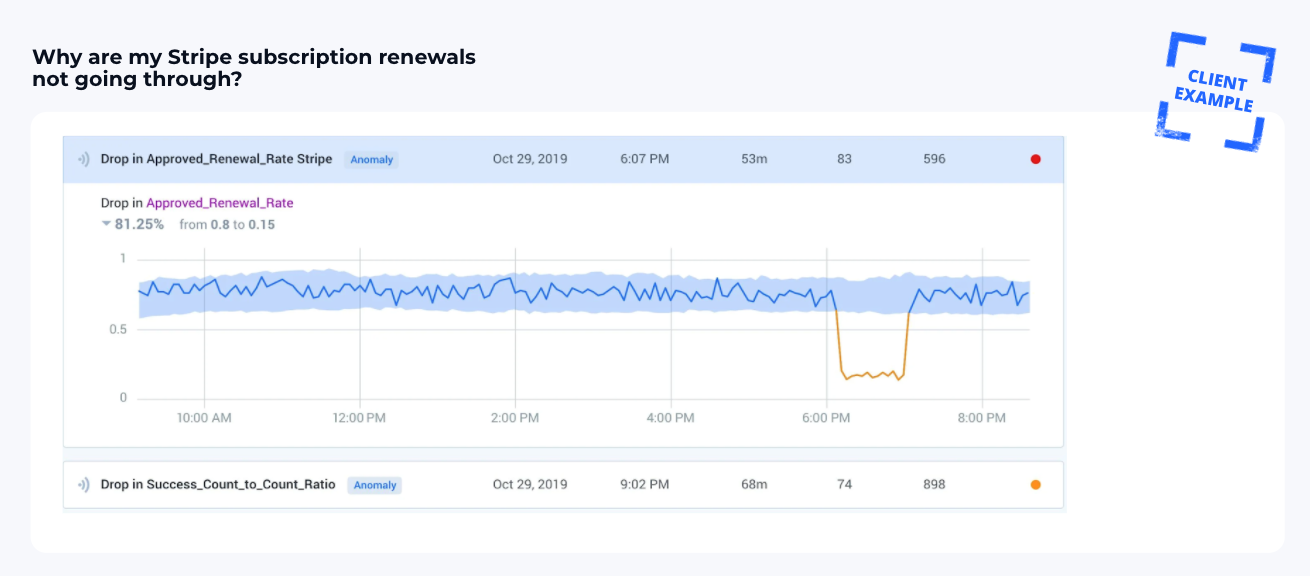How much is your company losing by reacting to problems after they’ve had a negative impact on your bottom line? How many customers churn in the time it takes you to notice complaints to your call center?
Proactive business monitoring allows you to detect incidents before they have a negative impact on your company’s revenue and reputation. There are tremendous opportunities for forward-thinking companies embracing AI to monitor and learn data as it streams in order to detect anomalies.
Left behind will be organizations still relying on the reactive approach of traditional solutions that can’t keep up with the volume and complexity of today’s data. It’s one reason global advisory firm Gartner predicts the decline of BI dashboards and a move to proactive solutions that use AI-driven technology.
Business Benefits of Proactive Business Monitoring
1. Reduce Operational Costs
Reduce operational overhead by proactively solving issues that affect revenue and customers. By speeding up time to detection, your teams will spend less time finding and fixing incidents and more time on activities that drive business value.
2. Improve Customer Experience
According to Salesforce, 80% of consumers say customer experience is just as essential as the product or service itself. The best way to improve the customer journey is to make it seamless and free of errors. Proactive monitoring ensures your team gets an alert that something is wrong before your customer notices.
3. Protect Revenue
The revenue ecosystem for most organizations today is complex and fragmented, with billions of daily events across segments, products and payment providers. AI monitoring can catch payment issues and missing revenue in real time.
How Traditional BI Dashboards Fall Short of Proactive Monitoring
Businesses in today’s data-driven world are tracking thousands of metrics and KPIs and often billions of events each day. Conventional business intelligence (BI) solutions aren’t equipped to deliver the real-time insight needed to catch costly errors.
The following challenges are reasons businesses are ditching BI dashboards in favor of a more automated approach.
1. Business Insight Latency
Analyzing data in traditional dashboards is reactive and slow by nature. Retrospective analysis uses historical data to understand what happened in the past in order to spot trends. To get meaningful insights, analysts need to drill down to find answers, which is a time-consuming process.
2. Manual Analysis
To ensure the business is alerted to any critical incidents, dashboard analysts have to manually scan for issues and trends. This error-prone process doesn’t provide the automated insight organizations need to stay ahead of problems before they become too costly and damaging.
3. Alert Fatigue
The static thresholds of traditional BI platforms result in false positives, which lead to alert storms and false negatives, which pose the risk of missing incidents entirely. They are a drain on resources and reduce the time that could be spent improving efficiencies and delivering business value.
The Essentials of Proactive Business Monitoring
The most competitive companies today are using AI-powered business monitoring and anomaly detection to become proactive in everything they do. Gone are the days of finding out about a problem after the customer does or losing tens of thousands after an issue was detected in a payment gateway.
If proactive insight aligns with your business goals, make sure you include the following essentials:
1. Real-Time Detection
To find and fix business incidents as they’re happening you’ll need a solution that detects anomalies in real-time. AI and ML-driven business monitoring learns normal patterns of data and can quickly detect incidents as they are happening.
2. Correlation Analysis
The summarizing nature of dashboard tools can prevent businesses from understanding the root cause and importance of each incident. AI solutions that group and correlate anomalies ensure that your team gets the most important insights first and eliminates alert storms.
3. Holistic Visibility
It’s important that business monitoring solutions integrate data from all available data sources and aggregate into one centralized analytics platform. Breaking down silos will give you comprehensive monitoring and correlation for fast and proactive detection.
Use Cases for Proactive Business Monitoring
Customer Experience Monitoring
Monitoring metrics across the customer journey is critical to optimizing how customers interact with your business . Proactive solutions alert you to issues in conversion rates, login issues, subscribers and other critical KPIs to optimize the customer experience.
Payments and Revenue Monitoring
Issues with payment platforms, card transactions or online checkouts can cost businesses hundreds of thousands in revenue if not detected early. Proactive anomaly detection finds the root cause of the issue right away for fast resolution.
If your organization is ready to step up your monitoring game and become more proactive, talk to us about how we can help get you there.





